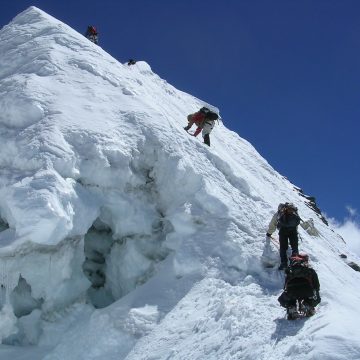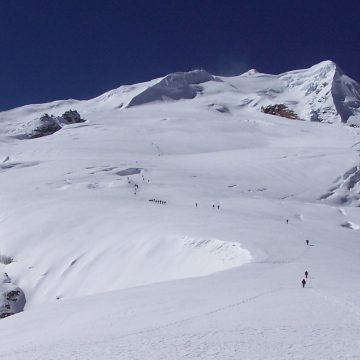In the morning after having breakfast we begin tour around Kathmandu with professional English
speaking guide. During the day you will cover some of the historical and religious, world heritage sites;
Swoyambhunath –“the Self Existing One’. The oldest Buddhist stupa of Nepal situated in the small hill,
from where you can see the nice view of Kathmandu valley. Historian believes that it is the oldest
history of Kathmandu. No sooner you enter the periphery of Swoyambhunath you will see the monks,
chanting religious words and monkeys chattering and hanging around the different temple and trees. It
is also known as monkey temple, especially given by the tourist.
Bouddha nath Stupa: the ancient stupa of Boudhnath is one of the biggest Buddhist stupa of Nepal,
situated in the northern part of Kathmandu valley, which is one of the trading routes of Nepal with Tibet
in ancient time. Tibetan merchants used to take rest and offers praying in this place during their trading
time. Later when Tibetan refugees enter Nepal in 1950s, most of them decided to stay around the same
place. Even now most of the monk in Boudhanath is from Tibet. Around the stupa you can see some
Buddhist painting school of traditional paints “Thanka”.
Pashupatinath Temple: Pashupatinath the national deity of Nepal is one of the most significant Hindu
temples of Lord Shiva in the world, located on the banks of the Bagmati River in the eastern part of
Kathmandu. The word Pashupatinath is derived from three Sanskrit words: “pashu” means organism,
“pati” means protector, and “nath” means Lord. Hence in hindu mythology Pashupatinath means
protector and Lord of all living things. The bank of Bagmati River is the cremation centre of Hindu dead
body. Where you can see the cremation process of hindu people. Beside this you can see the color full
sadhu ‘the holy devotee of Lord Shiva’ around the periphery of temple.
After sightseeing, final preparation for trekking. Trekking guide will meet you and give the final
instruction for next day.































